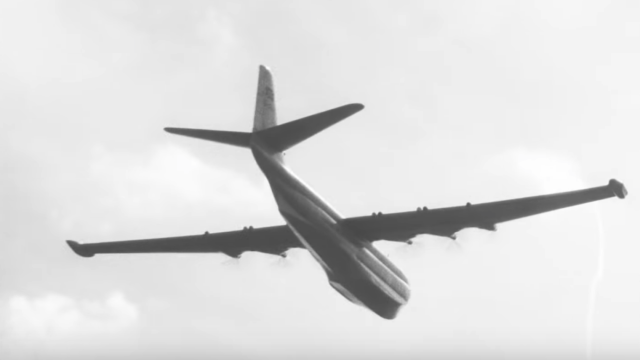Before World War II, the premier modes of air travel were dirigibles and flying boats. The Hindenburg disaster saw to the end of the massive gas-filled airships, but what exactly happened to those gleaming seaplanes that could land on water?
This video from the team at Mustard on Youtube helps explain where they went through the story of British planemaker Saunders-Roe, a seaplane maker that refused to give up on the idea even as jets made air travel quicker, safer, and more accessible.
Having watched the success of seaplane technology that helped keep the British Empire connected by air in the first part of the 20th Century, A.V. Roe of Avro fame saw an opportunity in seaplanes and founded the company by buying out a sleepy boatbuilding outfit called S.E. Saunders on the Isle of Wight. During the war, the company built some seaplane fighters but really got going in 1943 when they thought with a project they hoped would shape the character of post-war intercontinental travel.
The idea was the Saunders-Roe SR.45 Princess, a flying boat that could offer the luxury of a transatlantic crossing by oceanliner with the speed of air travel. In victory, such an aircraft could have been the lifeblood of a British realm that still spanned from Western Canada all around the globe to the Pacific Islands. In the end, though, Saunders-Roe never made it. The Princess never made it past the prototype phase and British airlines chose jet propulsion over the opulence of massive flying boats.
So what exactly changed between the heyday of flying boats in the ‘30s and the jet age? World War II, mostly. The technical advances driven by World War II made planes faster, capable of longer distances aloft, and easier to land on, well, land. Add to that fact that the war effort was responsible for a wave of airport construction, giving many localities access to air travel even without nearby bodies of water big enough to host large aircraft.
That failure didn’t totally deter Saunders-Roe, though. Despite the failure of the Princess, an even larger flying boat called the Duchess, jet-powered and capable of transporting more than a thousand people. Shipping company Peninsular & Oriental (P&O) was initially on board with this 24-engined behemoth but ultimately backed off when they realised just how insane the concept was.
After finally dropping the concept, Saunders-Roe pivoted to hovercraft technology, another field that never really took off (well, maybe it took off a few inches off the surface). The company eventually ended up largely owned by Westland Helicopters, today part of Italian firm Leonardo S.p.A.
As for the Princess prototypes, they were stored for years until proposals to reuse them for a number of other uses like troop or cargo transport came around. One more outlandish plan proposed nuclear power for the massive planes. Nothing ever became of those plans, though, and the prototypes corroded beyond use before they could enjoy a second life.
It’s sad to see how a wrong bet on a technology that was already doomed by changing preferences and conditions panned out, but it’s also always fun to see how a company with a little imagination tried to beat the odds too. I salute Saunders-Roe and the Princess and I think you should too.
